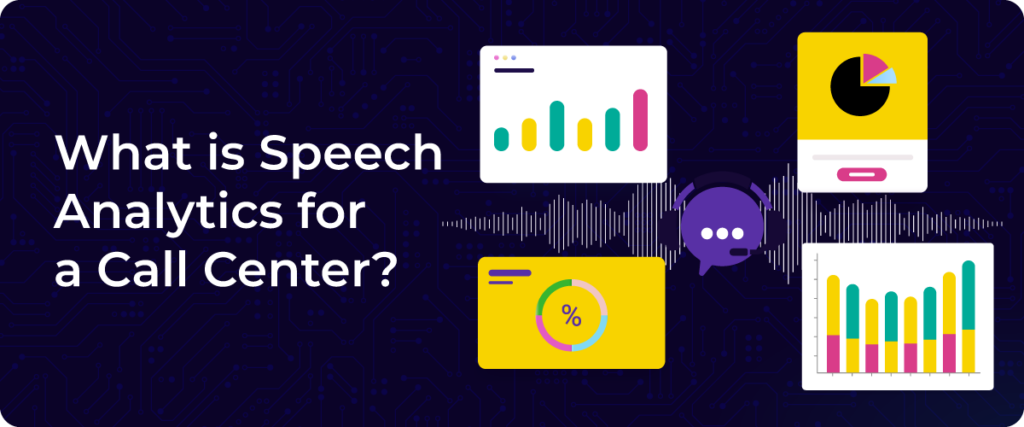Imagine your business as a ship navigating the vast ocean of customer expectations. Without a compass, you’re adrift.
Enter customer feedback analysis—your navigational tool ensuring smooth sailing. In fact, 80% of companies utilize customer satisfaction scores to dissect and enhance customer experiences.
Let’s embark on a journey to harness this invaluable resource, steering your enterprise toward unparalleled success. The charter for this blog shall be the below:
1. Understanding Customer Feedback Analysis
2. Step-by-Step Customer Feedback Analysis Process
3. Essential Customer Feedback Analysis Tools
4. Creating an Effective Analysis Template
5. Customer Feedback Analysis Examples
6. Best Practices for Analysis and Reporting
7. Conclusion
8. Frequently Asked Questions (FAQs)
Understanding Customer Feedback Analysis
Customer feedback analysis helps businesses decode customer sentiments and improve decision-making. Feedback generally falls into three main categories:
1. Structured vs. Unstructured Feedback
- Structured Feedback – Organized data like survey responses, star ratings, and multiple-choice forms. This data is easy to quantify and analyze using customer feedback analysis tools or an Excel template.
- Unstructured Feedback – Open-ended reviews, social media comments, and customer emails. It requires customer feedback summarization or AI-driven tools to extract insights.
2. Direct vs. Indirect Feedback
- Direct Feedback – Collected through surveys, support interactions, and NPS scores. Customers willingly share opinions.
- Indirect Feedback – Found in social media posts, online forums, and third-party review sites. Businesses must monitor these channels to uncover hidden insights.
Using a customer feedback analysis report format, companies can categorize and act on customer feedback, ensuring continuous improvement and enhanced customer satisfaction.
Step-by-Step Customer Feedback Analysis Process
To make the most out of customer feedback, follow this 6-step customer feedback analysis process:
1. Collect Customer Feedback
Start by gathering feedback from multiple channels—structured data like surveys, ratings, and NPS scores, as well as unstructured feedback from reviews, social media, and customer support interactions. Use customer feedback analysis tools to simplify this process.
2. Organize the Data
Once the feedback is collected, categorize it into key themes, such as product issues, customer service experiences, or usability concerns. For a more hands-on approach, you can organize the feedback manually using an Excel template.
3. Analyze Sentiment
Identify the sentiment behind the feedback—whether it is positive, neutral, or negative. Utilize customer feedback analytics tools to efficiently assess sentiment and emphasize recurring patterns in customer responses.
4. Extract Key Insights
Dive deeper into both structured and unstructured feedback. For qualitative data (like reviews or social media comments), employ customer feedback summarization techniques to extract actionable insights. Quantitative data from surveys can be analyzed for trends or scoring patterns.
5. Report Findings
Create a detailed customer feedback analysis report format that includes key findings, trends, and areas for improvement. This report will serve as the basis for decision-making and improvement strategies.
6. Act on Feedback
Use the insights gained to make informed changes—whether it’s tweaking your product, improving customer service, or addressing recurring issues. Provide customer feedback training to your team to ensure they can handle future feedback effectively.
This process ensures that feedback isn’t just collected but actively used to drive business improvements.
Get feedback analyzed in a click with ConvoZen.AI
Essential Customer Feedback Analysis Tools
To conduct a thorough customer feedback analysis, businesses need a set of tools to manage, process, and interpret feedback efficiently. Here are some essential tools for the job:
1. Survey Platforms
Survey platforms like SurveyMonkey, Google Forms, or Typeform are ideal for collecting structured feedback. They allow businesses to design custom surveys, gather responses, and analyze customer sentiments through built-in analytics features.
These platforms provide the foundation for customer feedback analysis by offering clear, measurable data on customer satisfaction.
2. Text Analysis Software
For unstructured feedback (e.g., reviews, open-ended survey responses), text analysis software like ConvoZen.AI can process large volumes of textual data.
These tools use natural language processing (NLP) to detect sentiment, categorize feedback, and extract actionable insights. They help businesses quickly identify common themes or concerns from customer comments.
3. Social Listening Tools
Social listening platforms, such as Hootsuite, Sprout Social, or Brandwatch, enable businesses to track and analyze customer conversations on social media.
These tools can detect mentions of your brand, product, or service and measure customer sentiment in real time. They offer valuable indirect feedback to complement structured survey data.
Try Voice of Customer tools like ConvoZen.AI to get feedback from all your channels like chat, mail, calls, social media, and more. ConvoZen.AI provides you with 360° feedback.
4. Excel/Spreadsheet Solutions
For businesses with smaller data sets or manual tracking preferences, Excel or Google Sheets can organize and analyze feedback. These spreadsheet solutions allow you to use formulas, pivot tables, and charts to uncover patterns in structured feedback, such as ratings or scores.
5. AI-Powered Analytics Tools
AI-driven tools like ConvoZen.AI use machine learning to automate the process of feedback analysis. They can provide deep insights, predictive trends, and personalized recommendations, making it easier for businesses to act on customer feedback quickly and effectively.
Start automation with ConvoZen.AI today
Creating an Effective Analysis Template
An effective customer feedback analysis template helps organize and assess feedback, providing clear insights for improvement. Here’s how to create one:
1. Define the Objective
Start by specifying the analysis’s purpose—whether it’s improving products, services, or customer experience.
2. Categorize Feedback
Organize feedback into categories such as product features, customer service, and suggestions for improvement. This will help you pinpoint specific areas to address.
3. Include Rating Scales
Add quantitative data sections with Likert scales or NPS ratings for easy analysis of satisfaction levels.
4. Open-Ended Feedback
Include a section for unstructured feedback, capturing customer comments and suggestions. Use customer feedback summarization tools for insights.
5. Sentiment Analysis
Add columns to assess whether feedback is positive, neutral, or negative. Tools like text analysis software can automate sentiment detection.
6. Actionable Insights & Recommendations
Finish with a summary of findings and actionable steps. This ensures that feedback leads to real changes, whether improving a product feature or enhancing customer service.
This template makes customer feedback analysis more efficient and allows quicker, informed decision-making.
To download the template click here
Customer Feedback Analysis Examples
1. Objective
Improve customer satisfaction for an online clothing store.
2. Feedback Categories:
- Product Quality: 60% of responses mentioned issues with sizing and fabric quality.
- Customer Service: 30% expressed dissatisfaction with response times.
- Website Usability: 10% complained about difficulty navigating the site.
3. Survey Ratings:
- Overall Satisfaction: 3.8/5
- NPS Score: 45
4. Sentiment Analysis:
- Positive: 50% (comments on style and affordability)
- Negative: 40% (concerns about quality and shipping delays)
- Neutral: 10%
5. Key Insights:
- Common sizing and fabric issues need addressing.
- Response time is a major pain point in customer service.
6. Actionable Recommendations:
- Review product descriptions and sizing charts to reduce returns.
- Improve customer service training to reduce wait times.
Simplify website navigation based on user feedback.
This example showcases how structured customer feedback analysis helps identify improvement areas and guide decision-making.
Best Practices for Analysis and Reporting
To maximize the impact of customer feedback analysis, follow these best practices:
1. Use AI-Powered Analytics Tools
Leverage AI-driven platforms like ConvoZen.AI to automate sentiment analysis, summarize unstructured feedback, and generate actionable insights. These tools streamline customer feedback analysis by identifying trends and reducing manual effort.
See ConvoZen.AI in Action Today!
2. Segment Feedback for Better Insights
Categorize responses by demographics, customer lifecycle stage, or issue type. Analyzing feedback from first-time buyers separately from that of loyal customers helps tailor solutions more effectively.
3. Visualize Data for Clear Reporting
Use dashboards, charts, and word clouds to present findings in an easy-to-understand format. Tools like Excel, Google Data Studio, or BI platforms make customer feedback analysis reports more impactful and accessible.
4. Close the Loop with Actionable Steps
A report is only useful if it leads to action. Summarize key takeaways and assign specific tasks, such as customer feedback training for service teams or product updates based on recurring complaints.
By integrating these best practices, businesses can turn raw feedback into meaningful improvements, enhancing customer satisfaction and long-term loyalty.
Conclusion
A well-structured customer feedback analysis process enables businesses to transform feedback into meaningful improvements. Using the right tools and AI platforms, such as ConvoZen.AI, companies can automate insights and make data-driven decisions.
Effective reporting, visualization, and action steps ensure feedback leads to real change. Prioritizing analysis and follow-through enhances customer satisfaction, strengthens loyalty, and drives long-term business success.
Frequently Asked Questions (FAQs)
1. What Steps Need to Be Taken to Analyze Customer Feedback?
To analyze customer feedback, follow these steps:
- Collect Data – Gather structured (surveys) and unstructured (reviews, social media) feedback.
- Organize & Categorize – Group responses by themes like product, service, or pricing.
- Analyze Sentiment – Use AI tools to assess positive, neutral, or negative feedback.
- Identify Trends – Spot recurring issues and opportunities.
- Generate Reports – Summarize findings with visualizations.
- Take Action – Implement improvements based on insights.
2. What Are Four Methods to Obtain Customer Feedback?
- Surveys & Questionnaires – Structured forms to collect quantitative and qualitative insights.
- Social Media Listening – Monitoring customer mentions and sentiments online.
- Customer Support Interactions – Analyzing feedback from calls, chats, and emails.
- Online Reviews & Ratings – Evaluating feedback from platforms like Google and Trustpilot.
Click here to learn more on how to obtain customer feedback and ways to collect it.
3. How to Structure Customer Feedback?
- Categorization – Divide feedback into themes like product quality, service experience, and pricing.
- Scoring System – Use ratings, NPS, or sentiment scores for quick analysis.
- Summarization – Use AI tools or manual tagging to extract key insights.
- Action Plan – Document insights and recommendations for improvement.
Unleash Your Contact Center’s Potential Today! 👉 Get Started with ConvoZen.AI and Elevate Customer Experience.


